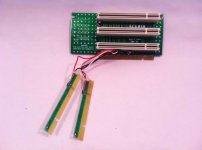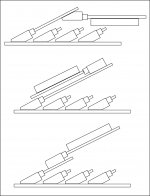tt
Well-known member
I was wondering about the feasibility of making new 30-pin SIMMs and wanted to see what thoughts members here might have. Finding 16MB modules can be bit tough if you have space constraints like within the SE/30 chassis. Could making our own be feasible without being too expensive?
trag pointed out the simplicity of the circuit here viewtopic.php?f=7&t=18527 So perhaps it would be feasible to make 30-pin SIMMs by fabbing them at SeedStudio and finding the appropriate chips if they are still being manufactured. I tried finding a source for the IC used in my 3-chip SIMMs (KM44c16100BK-6) but could not readily find any in stock. I would think a 2-chip design would be optimal to reduce complexity/cost and power consumption assuming it is compatible with most machines.
trag pointed out the simplicity of the circuit here viewtopic.php?f=7&t=18527 So perhaps it would be feasible to make 30-pin SIMMs by fabbing them at SeedStudio and finding the appropriate chips if they are still being manufactured. I tried finding a source for the IC used in my 3-chip SIMMs (KM44c16100BK-6) but could not readily find any in stock. I would think a 2-chip design would be optimal to reduce complexity/cost and power consumption assuming it is compatible with most machines.


